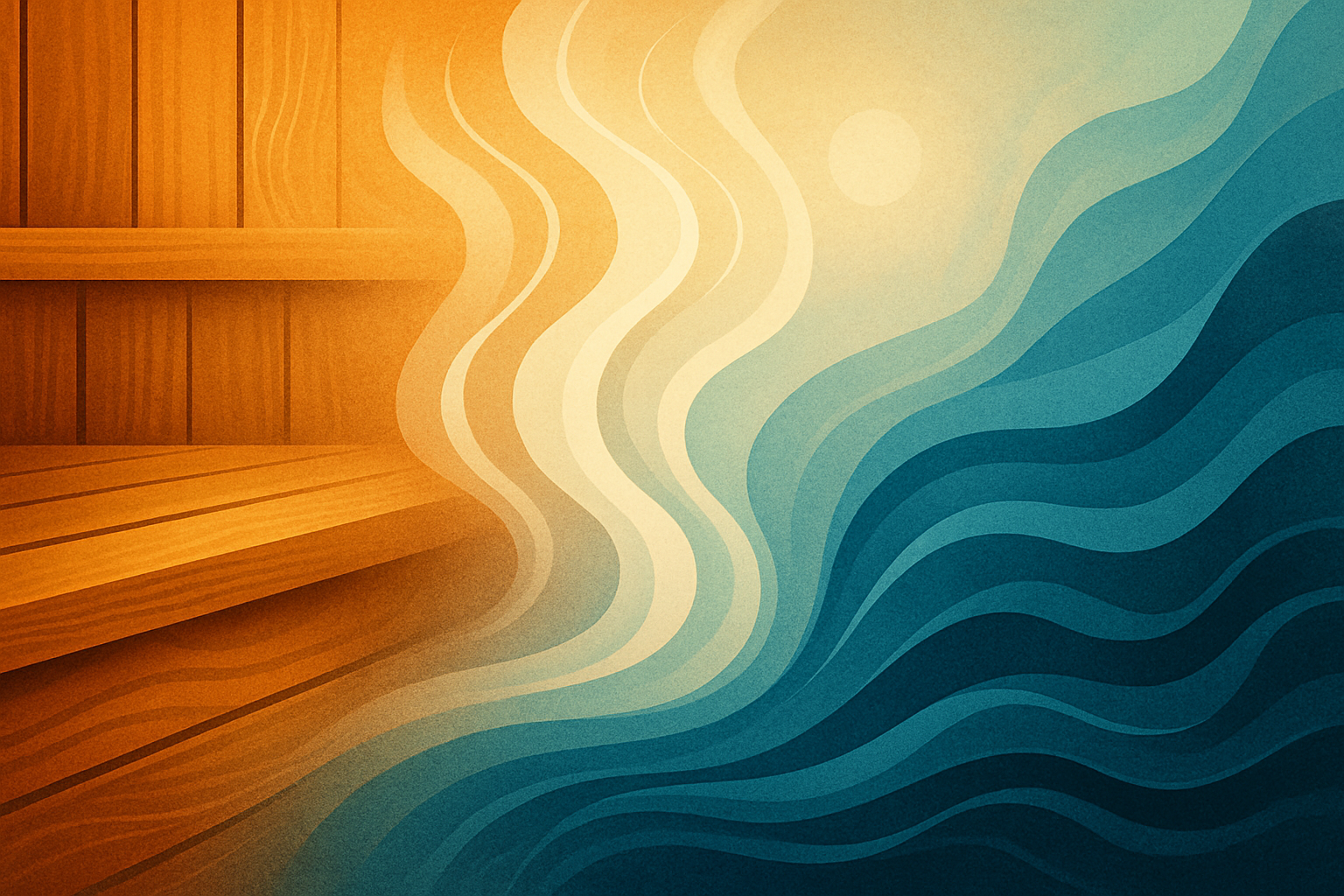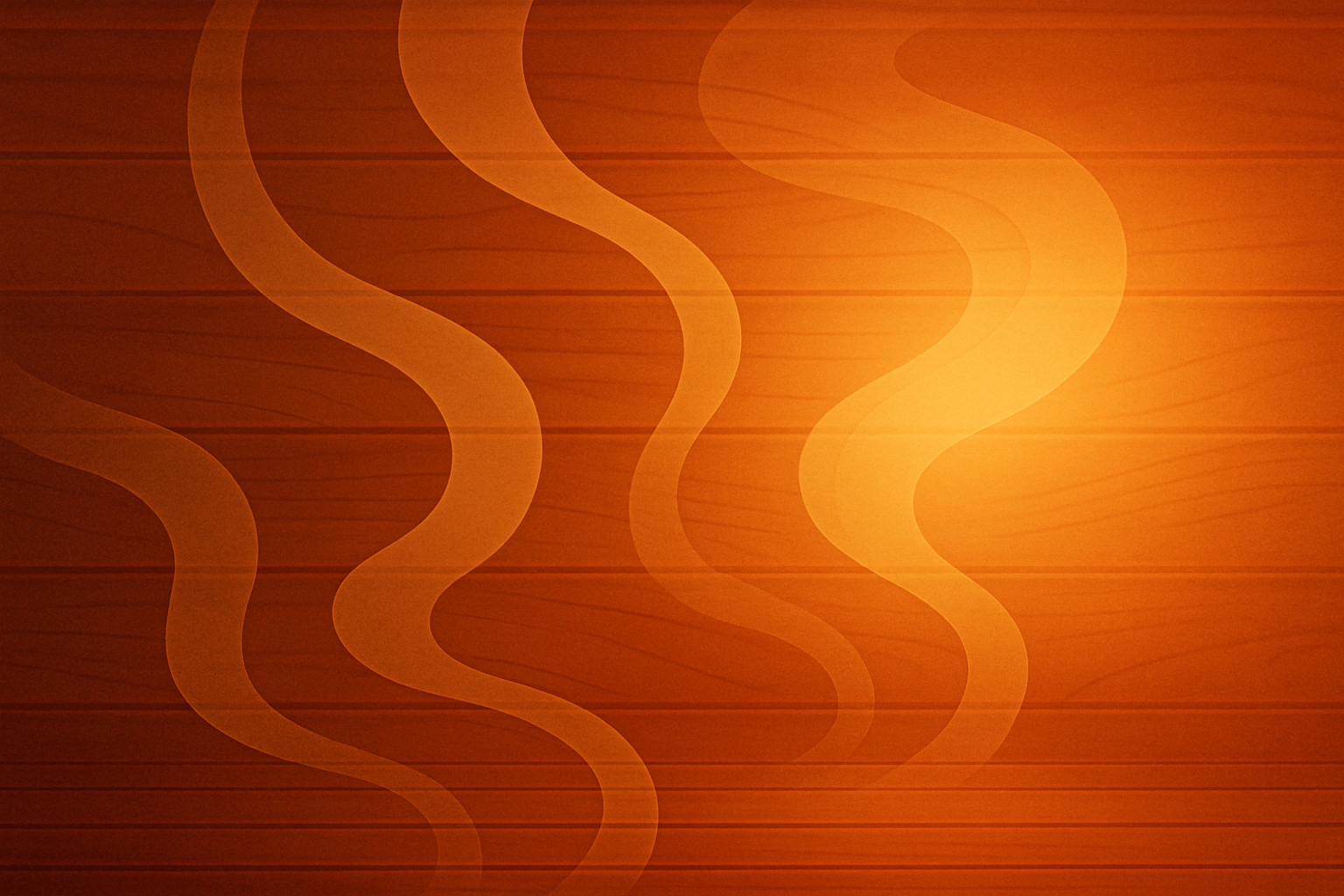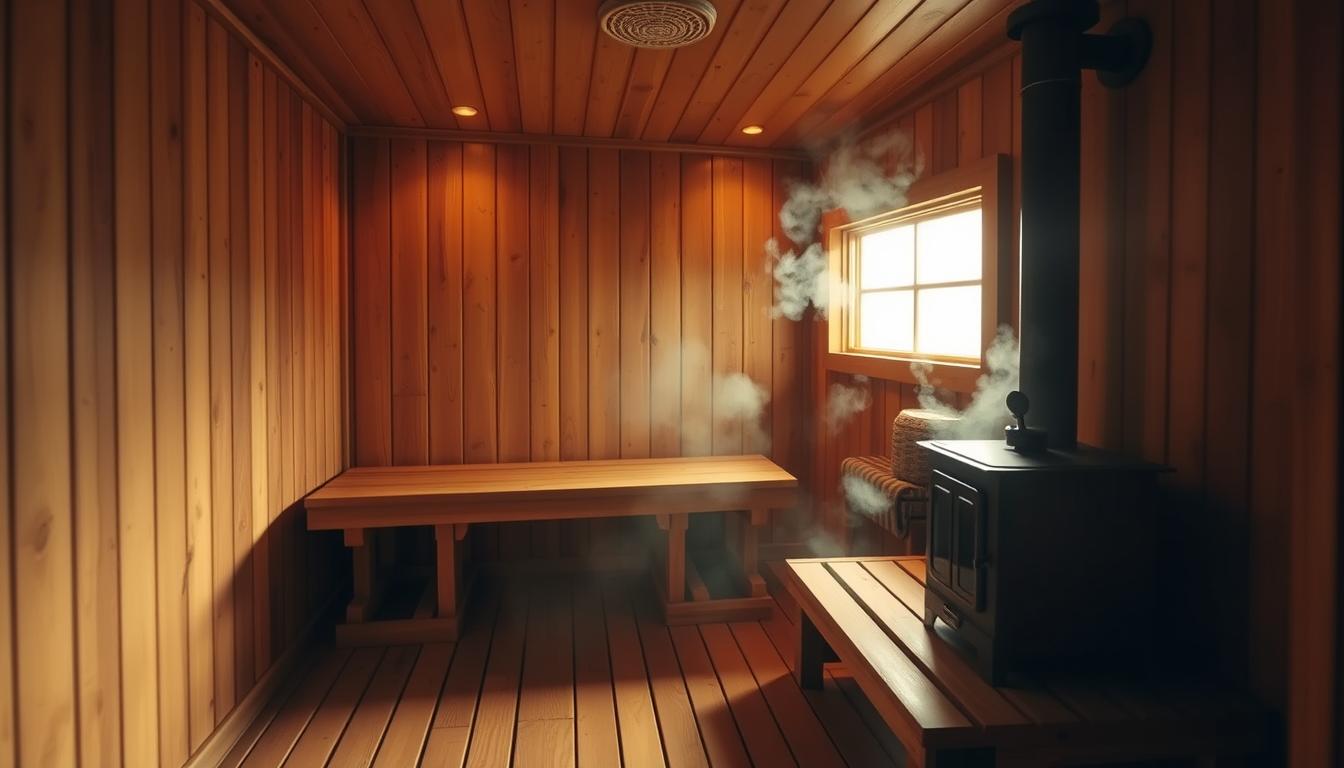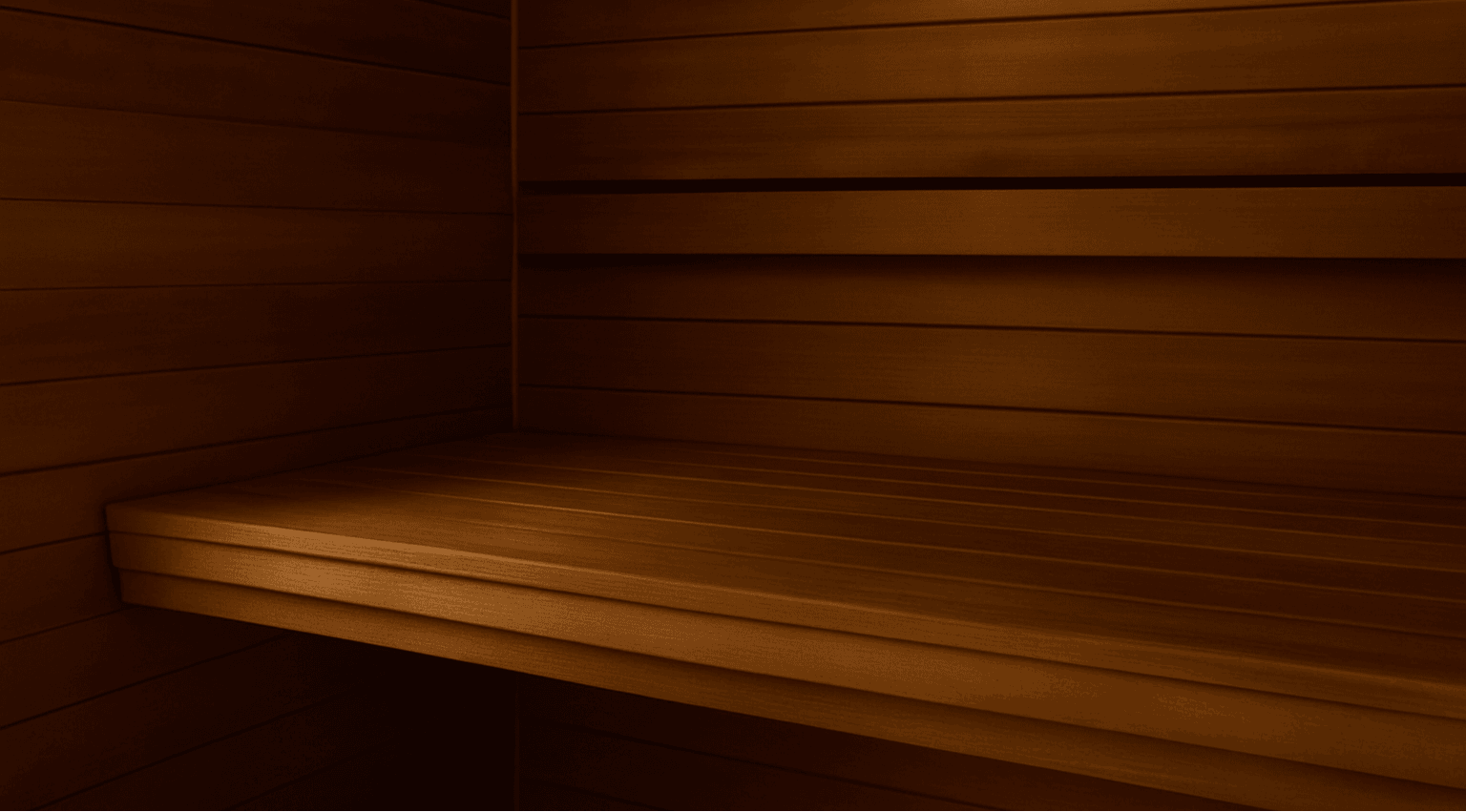
Contrast Therapy: Sauna & Cold Plunge for Enhanced Wellness
Alternating between intense heat and icy cold has been a wellness ritual in Nordic cultures for centuries. Today, contrast therapy—using a hot sauna followed by a cold plunge or shower—is gaining popularity among athletes and wellness enthusiasts for its potential to boost circulation, speed recovery and improve mental health. Recent research highlights how combining hot and cold exposures may offer unique physiological benefits but also underscores the importance of practicing safely.
Quick Answers to Common Questions
What is contrast therapy?
Contrast therapy involves moving back and forth between a sauna’s high heat and a cold plunge or shower. The heat expands blood vessels and increases blood flow, while the cold constricts vessels and directs blood to your core. Advocates say this alternating vasodilation and vasoconstriction can improve circulation, flush out toxins and stimulate the immune system.
What are the health benefits of combining sauna and cold plunge?
Alternating hot and cold exposures may boost circulation, enhance muscle recovery and relieve pain. Cold water immersion (CWI) can improve mood by increasing endorphins and norepinephrine levels and may lower cortisol, helping you better manage stress. Some studies report that after cold‑water swimming, participants feel more alert, inspired and less tense.
How long should a contrast therapy session last?
Protocols vary, but research suggests that a 15–20‑minute sauna session followed by about 2 minutes in a cold plunge induces greater decreases in heart rate and blood pressure than sauna alone. Novices should start with shorter exposures and gradually increase duration as tolerated. Always listen to your body, hydrate and rest between cycles.
Who should avoid contrast therapy?
Evidence on contrast therapy is still limited. People with cardiovascular disease or arrhythmias should consult a doctor before trying it, as alternating hot and cold stresses the heart and can cause transient skin edema. Pregnant individuals and those with uncontrolled blood pressure should also seek medical advice before practicing.
In‑Depth: Why Heat & Cold Work Together
Improved circulation and detoxification
Sauna heat causes blood vessels near the skin to dilate, increasing blood flow and promoting the delivery of oxygen and nutrients. Cold exposure has the opposite effect—vessels constrict, shunting blood toward vital organs. Alternating these two states improves overall circulation, helping the body efficiently deliver nutrients and remove waste. The process may also stimulate the immune system and flush toxins.
Muscle recovery and pain relief
Contrast therapy may enhance muscle recovery and reduce soreness. The hot phase relaxes muscles and increases blood flow, while the cold phase reduces inflammation and pain signals. A study found that participants who completed 16 minutes of sauna followed by 2 minutes of cold water immersion experienced a greater drop in heart rate and blood pressure than those who cooled down with a brief shower and rest. The vasoconstriction from cold exposure also helps remove metabolic waste after intense workouts.
Mental health and mood enhancement
Cold water immersion has been linked to improved mood and stress resilience. Research shows that CWI can elevate endorphin and norepinephrine levels, providing an immediate mood boost. In one study, students who took a 20‑minute dip in 13.6 °C seawater experienced significant decreases in negative emotions like tension and depression and increases in positive feelings like vigor and self‑esteem. Regular CWI may also help lower cortisol levels over time, promoting better stress management.
Hormonal and metabolic effects
Cold exposure triggers the release of norepinephrine, which enhances circulation and has anti‑inflammatory and analgesic properties. It also stimulates the production of beta‑endorphins and dopamine, neurotransmitters that improve mood and motivation. Contrast therapy may induce a hermetic stress response, training the body to better handle stress and potentially boosting metabolic health via activation of brown adipose tissue and related pathways.
Precautions and limitations
Despite its popularity, contrast therapy is not for everyone. Researchers caution that evidence is still limited and highlight risks such as cardiac arrhythmias and transient edema when alternating heat and cold. Individuals with heart disease, blood pressure problems, or other health concerns should seek medical guidance before practicing. Always start slowly, stay hydrated and avoid extreme temperatures.
Contrast Therapy vs. Single‑Modality Approaches
While both sauna and cold water immersion offer standalone benefits, combining them may amplify results. A sauna session alone can improve cardiovascular health and lower blood pressure, while cold exposure alone can boost mood and reduce inflammation. Contrast therapy leverages the body’s response to temperature extremes—vasodilation during heat and vasoconstriction during cold—to enhance circulation, expedite recovery and promote resilience. However, if you prefer a gentler approach, start with either modality separately and gradually incorporate the other.
Essential Gear for Safe Contrast Therapy
| Accessory/Feature | Purpose | Notes/Trends |
|---|---|---|
| Sauna (traditional or infrared) | Provides heat phase for vasodilation and relaxation | Choose a unit with adjustable temperatures; ensure proper ventilation |
| Cold plunge tub or shower | Delivers cold phase for vasoconstriction and recovery | Aim for water temperatures between 10–15 °C (50–59 °F); portable tubs or bathtubs work well |
| Digital thermometer & timer | Tracks temperature and session length | Helps maintain safe ranges and avoid overexposure |
| Towel & robe | Comfort after transitions | Use absorbent materials to dry quickly and stay warm between cycles |
| Hydration station | Replenishes fluids lost through sweating and cold exposure | Keep water or electrolyte drinks nearby; avoid alcohol |
| Heart rate monitor (optional) | Tracks physiological response | Useful for athletes monitoring recovery and cardiovascular function |
Tip: Set up your hot and cold stations close together to minimize time between transitions. Always move carefully when switching from sauna to cold plunge to prevent dizziness.
Creating Your Contrast Therapy Ritual
-
Prepare your spaces: Ensure your sauna is heated to a comfortable temperature (around 70–90 °C or 158–194 °F). Fill your cold plunge tub or bathtub with water cooled to 10–15 °C (50–59 °F). Have towels, hydration and a timer ready.
-
Start with heat: Spend 10–15 minutes in the sauna, focusing on deep breathing and relaxation. Beginners may start with shorter sessions and gradually increase the duration as tolerated.
-
Transition to cold: Exit the sauna, dry off briefly and immerse yourself in the cold plunge for 1–3 minutes. Breathe steadily and stay calm. If the cold is overwhelming, shorten the duration and work up gradually.
-
Rest and repeat: Rest for a few minutes between cycles, sipping water and allowing your heart rate to stabilize. You can repeat the heat/cold cycle two to three times per session, depending on your comfort and experience.
-
Finish warm and rest: End with a warm phase or a gradual cool-down, then dry off, wrap up in a robe and relax for at least 10–15 minutes. Give your body time to recover before resuming normal activity.
Voice‑Optimized FAQ
Is contrast therapy safe for beginners?
Contrast therapy can be safe when practiced cautiously. Start with short exposures—5–10 minutes in the sauna and 30–60 seconds in the cold plunge—and gradually build up. Always stay hydrated and listen to your body. People with medical conditions should consult a doctor before trying contrast therapy.
Does alternating hot and cold really boost circulation?
Yes. The heat phase dilates blood vessels, increasing blood flow, while the cold phase constricts vessels and shifts blood toward your core. This alternating vasodilation and vasoconstriction is believed to enhance circulation and help remove metabolic waste.
Can contrast therapy improve mood and relieve stress?
Cold water immersion stimulates the release of endorphins and norepinephrine, providing an immediate mood lift. Studies report that participants feel more positive and less tense after cold‑water dips. Combining heat and cold may enhance overall resilience to stress by training your body’s hormonal response.
How often should I practice contrast therapy?
For general wellness, 2–3 contrast therapy sessions per week may provide benefits. Athletes seeking recovery might incorporate sessions after intense workouts. Pay attention to how your body responds and avoid overdoing it. If you’re new, start once a week and adjust as needed.
What equipment do I need at home?
You’ll need a sauna (traditional or infrared) and a cold plunge tub or a bathtub you can fill with cold water. A digital thermometer, timer, and comfortable towels are also essential. A heart rate monitor can help track your physiological response during sessions.
Conclusion and Call to Action
Contrast therapy brings together the ancient practice of sauna bathing and the invigorating power of cold plunges. Alternating heat and cold may improve circulation, support muscle recovery, elevate mood and build resilience—when practiced safely. Remember that evidence is still emerging and that individuals with health conditions should proceed with caution.
Ready to experience the benefits of contrast therapy? Explore our curated selection of saunas, cold plunge tubs and wellness accessories at saunaluxuries.com. Whether you’re an athlete seeking faster recovery or a wellness enthusiast looking to enhance your daily ritual, our products can help you create the perfect hot‑cold experience. Embrace the invigorating synergy of heat and cold and transform your home into a luxurious wellness retreat today.







Leave a comment
This site is protected by hCaptcha and the hCaptcha Privacy Policy and Terms of Service apply.